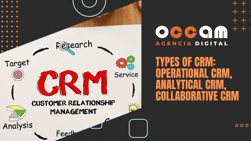Tips to find out the degree of customer satisfaction
Index Content
Customer satisfaction is one of the main objectives of any company. It might seem that the purchase and the benefit obtained from it is reward enough, but this is not the case. Nowadays, almost all companies are concerned about the experience their customers have had during the purchase process. Especially those companies that work with Inbound Marketing .
Customer satisfaction provides benefits for the organisation that go beyond the purchase already made. A satisfied customer shows that the company is meeting its objectives and is working in the right direction. But it is also a potential repeat customer and promoter. A promoterisa customer who recommends a company, product or service to his or her acquaintances.
Part of customer satisfaction lies in the quality of what is purchased, but also in the shopping experience. For the company, it is important to know its audience: their motivations, objectives, challenges and behaviours. This is the only way to satisfy their needs. Satisfaction almost always translates into loyalty, a value of great importance for any business.
Tips to find out the degree of customer satisfaction:
- It is essential to know what customers value: speed of response, transparency, accessibility, empowerment and efficiency.
- Customer ownership: The proportion of participation in any kind of customer satisfaction method should give customers more space to express themselves. 80% of the time the customer should speak and only 20% of the time the company should speak; this is the measure that is usually considered the perfect measure.
- A company can use social networks to get to know the opinion of its customers. It is a medium in which they feel comfortable, where they are used to evaluate positively or negatively the content they see, even to comment on it. Therefore, they are much more predisposed to show their opinion about a company or product. Through likes and comments you can get a fairly accurate idea of what customers like the most.
At the same time, communication tools such as internal chats or private messages are frequently used by users. While more traditional means such as emails or website chats should continue to be used, these new conversations are more accessible in the eyes of consumers and should be exploited accordingly. - Time-saving: In reality, when you use any of the methods below, you are taking up some of the customer's time, and that always predisposes them to want to finish as soon as possible. If there is one thing that underlies all satisfaction techniques, it is time-saving. No method of customer satisfaction should take too long, as interest and willingness will wane, leading to less representative results.
However, in social media, polls, surveys, reactions to product posts and other similar methods can provide very useful information and will serve to structure your interactions, build loyalty and attract new customers and partners.
Some methods to do this:
- Satisfaction surveys: with questions referring to service delivery, customer experience and overall satisfaction. It is a tool that allows obtaining information on several different areas of the company, such as sales service, product, etc.
- Customer Satisfaction Scale: A metric from 1 to 10. It provides a very precise numerical result but does not specify as much as the previous one.
- Customer Effort Score: Focuses on the effectiveness of problem solving, with the customer having to decide between a scale of "Very easy, easy, indistinct, difficult or very difficult".
- Consistency Score: Evaluates the overall consistency of the company. The balance that exists between the different points of contact between the customer and the brand. Very useful in terms of omnichannel.
- First Contact Resolution: It counts as a percentage how many people resolved their incident or managed to satisfy their need in the first contact. This method is also a great measure of efficiency.
- Net Promoter Score or NPS: Helps determine who are the promoters of the brand. It starts with a question similar to: "On a scale of 0 to 10, how likely is it that you would recommend this product to a friend? The answers are then classified into three groups: Promoters are customers who answer with 9 or 10, passive customers are those who answer with 7 or 8 and detractors are those who answer with between 0 and 6.
But, in addition to the more immediate knowledge of whether customers are happy with the service offered, these techniques reveal other very enlightening data. Among them, they reveal areas of opportunity, enrich the buyer personas, differentiate the brand, favour loyalty, which is, as we said, essential for the good course of the company.
Therelationship that exists,therefore, between company and customer will be of great help for the latter topositivelyvaluetheproduct and thepurchase experience . Theobjective ofinboundmarketingeffortsis tofosterpersonalrelationships, and forthis, amastery of the context isessential.




